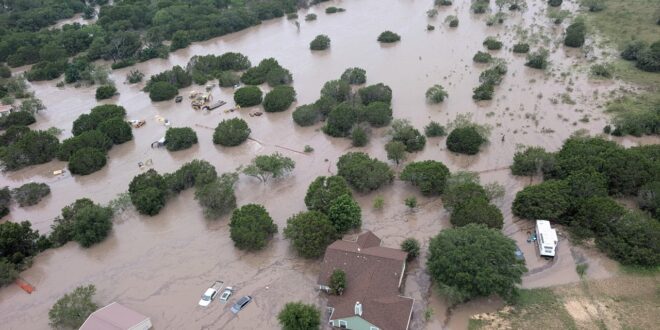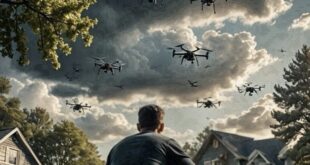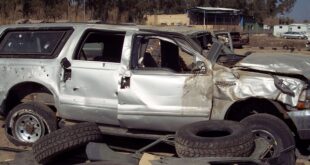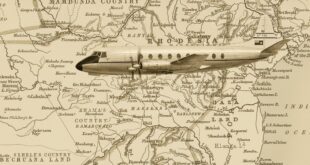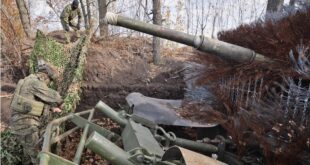by Martin Kufus
Author Martin Kufus was a volunteer firefighter in Texas, and participated in disaster ops there. He embarked on a tense mission in 1998, after flash floods wreaked havoc along the southern border. The following is based on a chapter from his book, Plow the Dirt but Watch the Sky.
Our four paddles stroked the brown water as the summer sun emerged from behind clouds. It would be a hot, muggy day – August in South Texas. The Zodiac was in slow current. San Felipe Creek in Del Rio was returning to its normal depth. Almost 36 hours had passed since the killer flood struck. Tall, wide stands of river cane once lined the creek banks – till the flood pushed them all over, turning the lush growths into a thick layer of mud-covered, dying vegetation. Debris was scattered in the dirty water and on the shores: pieces of houses, contents of houses, fallen trees, tires, trash, and vehicles. Hunks of plastic and colorful items of clothing dangled from tree limbs 10–12 feet above us, marking the earlier passage of a doomed home. Those angry waters had pushed cars, SUVs, vans, and pickups around like Tonka toys. Some were crumpled badly. All had to be inspected for victims.
The flood slammed the border city on Aug. 23, 1998. Tropical Storm Charley had come inland from the Gulf of Mexico, veered west–northwest some 200 miles, weakened, and stalled. A dozen counties received heavy rainfall but Del Rio, in Val Verde County, received 17 inches in 12 hours. (There was flooding with deaths across the border, too, in northeastern Mexico.) Many residents got out of their homes in time, but not everyone in Del Rio got the word. Reports soon came of police officers helplessly watching disintegrating houses float down the swollen San Felipe Creek, people clinging to their roofs. Both firefighters and members of the public used small boats to rescue whole families stranded on buildings or in trees.
READ MORE from Martin Kufus: Firefighters Enter the Inferno: ‘Sometimes You See Bad Things’
The next day, municipal leaders broadcast pleas for help. Not only had whole residential blocks along San Felipe Creek been flooded, drowning an as-yet-unknown number of people, and damaging or destroying hundreds of homes; the flood also entered Del Rio’s water system and contaminated it.
Our newly created flood team in Wilson County, some 180 miles to the east, provided four volunteer firefighters—Edwin, Scott, Tony, and me—plus safety and rescue gear in our military-grade F420 Zodiac inflatable boat. We were dressed not for fire but for water and mud: lightweight boots, BDU trousers, and our team’s red t-shirts. By then, multi-agency rescue operations has shifted to recovery, a grim task. Our boat team was assigned to a patrol of Texas game wardens in boats along a stretch of San Felipe Creek. Nobody had searched that water yet.
If we found a human body, we were to make sure it was stationary (didn’t float away or sink), mark the location with a piece of colored tape, and radio a report. With these instructions came a bag of latex medical gloves.
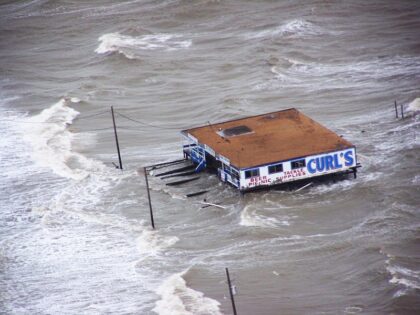
Earlier flooding near Galveston. (US Air Force photo by Master Sgt. Wally Bacio)
A Chevrolet Suburban sat upside-down in shallow water, its doors and windows closed. “Let’s check that one,” Edwin, our team leader, said. We pulled beside it. Tony reached out and grabbed the underside of the vehicle to steady the boat. I leaned over the side. I tried to look in. The big SUV’s tinted windshield and windows were too dark. Doors didn’t budge, either.
I reached for my survival tool/weapon, a Cold Steel “Special Forces Shovel” and carefully removed it from its sheath. I kept one edge of the Russian-style entrenching tool sharp for chopping weeds, wood, or rope. Because sharp metal and inflatable boats don’t mix well, when not needed the E-tool stayed in its sheath fastened via carabiner to a D-ring anchor point in the boat. Clutching the hardwood handle with both hands, I struck one of the Suburban’s side windows with the E-tool’s unsharpened edge; then, again. A jagged bit of glass bounced off my Gargoyle sunglasses. I leaned toward the opening; nothing. I smashed another window. Eyes and nose agreed: no body here. Tony tied a long strip of yellow plastic ribbon to the rear of the vehicle: nothing found. We pushed away and paddled upstream.
Minutes later, two state game wardens in a rigid-hulled motorboat pulled beside us. They hadn’t found anybody, either. We all suspected the remains of flood victims were around, buried under mud and debris or caught underwater.
When we halted our Zodiac to check another flooded vehicle, I noticed movement on the near bank: a tan boxer wearing a dog collar and tags was watching us. The expression on its canine face was confusion or fear or both. Maybe we were the first people it’d seen since its owner had departed, one way or the other, almost two days ago. The flood drowned many goats; left on its own, the dog might not go hungry, at least. The boxer darted off, somewhere.
Every few minutes a helicopter flew slowly over the San Felipe neighborhood, the center of the disaster zone. It was either a Border Patrol chopper (maybe even the one we had slept beside) or a larger, louder military Black Hawk. I guessed their altitudes at no more than 200 feet. We could see helmeted crewmen looking down, probably searching for bodies—little or no chance of live survivors by now—and perhaps also checking on the boat teams. By early afternoon, soaked with sweat and spattered with stinking mud, our team had searched several vehicles as well as vegetation and debris piles along about a 3/4-mile stretch of the creek. We found nothing. Twice we tied the Zodiac to the shore to search on foot. At one spot, Scott and I smelled something foul from within a large mound of mud and vegetation. Maybe the stench was from human remains, maybe a large dead animal, or maybe a refrigerator full of rotting meat. We couldn’t excavate far into the mound with just my little shovel. Tony tied a long strip of ribbon—its color signaling possible human remains—to the debris and we moved on.
The Texas Urban Search and Rescue contingent from Austin was working on foot at the homes in the devastated San Felipe neighborhood nearby. The searchers had two trained dogs whose noses were far keener than ours. If one of them confirmed the hidden presence of a human corpse, the searchers could bring in larger hand tools, and maybe powered tools, to exhume it. Then, the victim would go into a body bag for transport to the FEMA morgue set up in a hangar at Del Rio’s small airport.
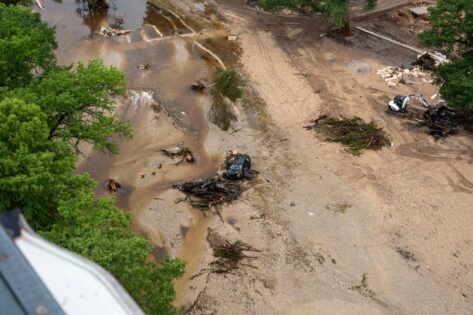
Flooding in Texas, 2025. (US Coast Guard photo)
Minutes later, we saw a mysterious clump of something 4–5 feet long that had come to rest above us on the creek bank’s slippery slope. I used the E-tool to establish handholds, plunging it vertically into the mud as I climbed, digging my boots in. I reached the object: a matted bundle of debris. “It’s nothing,” I announced, then slid back down.
We radioed in every half hour or so. After several hours of unsuccessful search, on and off the water, we were told to halt. We paddled the Zodiac back to our entry point. A senior game warden helped us lift the almost 300 pounds of boat and gear out of the creek, up a muddy bank, and 50 yards back to the trailer. We removed our bump helmets and life jackets and cleaned our hands and faces as best we could with premoistened hand wipes. (Bottled and canteen water was for our hydration in the humid heat.) We were operating in very unsanitary conditions; current tetanus vaccinations had been a prerequisite for volunteer flood duty. With a pickup’s tailgate as a dining table, the four of us prepared a midafternoon meal of Spam on white bread with mustard and a large bag of Fritos corn chips. Fifteen minutes later, we loaded up and moved out.
Driving slowly through the San Felipe neighborhood, we gawked at the flood’s effects on structures, especially adobe and wooden houses. Homes made of bricks or concrete blocks seemed to have fared the best—they were still standing—but even so the relentless floodwater had pushed inside and forced contents out. We passed by house after house that had vomited its contents into a fenced yard.
“Look at that one,” Scott said. A dirty brown line across the side of the small, single-family house appeared to be 5 feet above the ground. Water that high, with current, is an irresistible force.
We saw Urban Search and Rescue personnel—identically outfitted in helmets, field packs and gear, and uniforms—on their systematic searches of abandoned homes, outbuildings, and vehicles. Spray-painted symbols marked the buildings and vehicles that had been checked for victims. Some of the fluorescent-orange hieroglyphics warned of buildings’ imminent collapse. On the radio, we overheard a report from one of the search teams: What appeared to be someone’s pet dog was refusing to leave a demolished house. The searchers couldn’t stay any longer, so the team leader requested a thorough follow-on search of the wreckage. The dog might know something.
By the weekend, news reports placed Del Rio’s death toll at 9, most of them in the San Felipe Creek area where we’d been, with 32 people still missing. An estimated 500 homes had been destroyed or left uninhabitable. Some of the drowning victims might never be recovered, we were told, as the San Felipe Creek flowed into the Rio Grande a few miles south of town.
Several weeks later, my volunteer fire department sent me to Kerr County for a three-day “Swiftwater Rescue Technician” course – in the Guadalupe River.
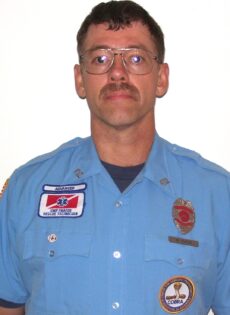
Author Martin Kufus served 12 years as a volunteer firefighter in Wilson County, Texas. An Army veteran, Kufus is a former Soldier of Fortune editor (1995–1997). He is author of the nonfiction book Plow the Dirt but Watch the Sky.
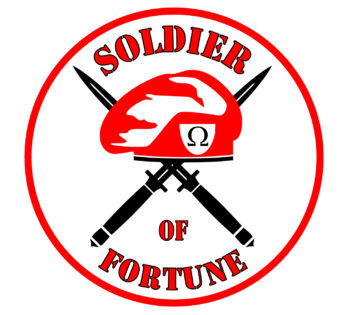
 Soldier of Fortune Magazine The Journal of Professional Adventurers
Soldier of Fortune Magazine The Journal of Professional Adventurers


